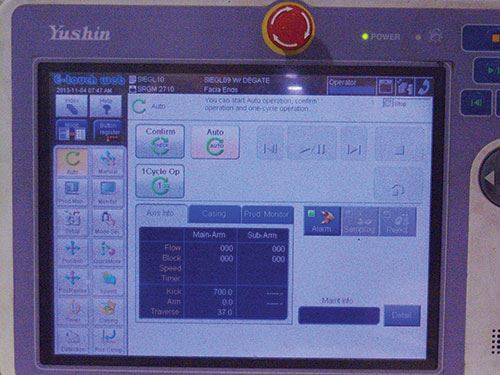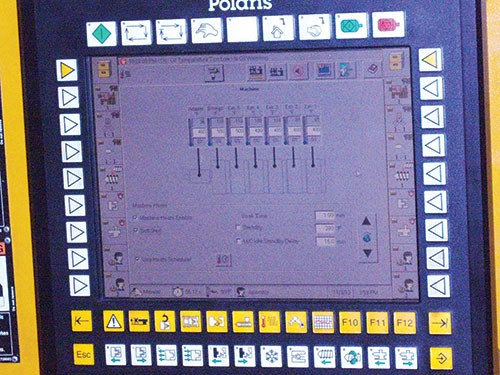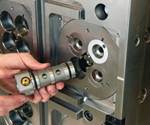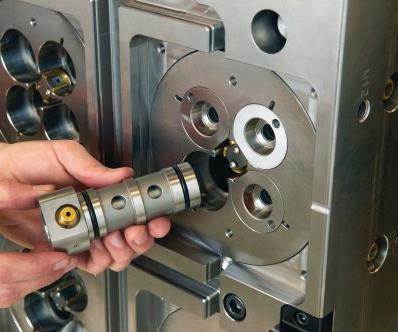In the Trenches: The Next Step in Minimizing Press Downtime
A look at crib notes on press operation for mold repair personnel.
When I make a press call, I usually think of one more item to add to the stock on hand: a multimeter, 15-amp fuses, a small assortment of roll pins for lifter heads, etc. All of these items support the same purpose: to reduce press downtime.
This makes the next suggestion to further the agenda of minimizing downtime obvious: Train mold technicians the rudiments of press operation, at a minimum. What good does it do to race to the “scene of the accident,” make a speedy repair, and then wait 10 or 15 minutes for a mold setter or process technician to come along and start the press up again?
Generally, mold repair technicians (at least in my experience) are the highest-paid hourly employees at a molding facility. So now, not only is the company losing money on press time, but also one of the highest-paid employees is waiting around not being productive.
(By the way, walking away from a repair is not usually a good idea. Its one thing if you’ve just replaced a broken water fitting, but if you were in the press addressing a part-defect issue, it’s always good practice to stay and verify your work. If the repair was not effective, there will be even more lost time waiting for your return.)
Following is an example of instructions I initially prepared for myself and then shared with others in my department:
• Don’t just take notes.
• When you are being coached through the process, insist that you be allowed to push the buttons.
• Go through the process several times, take notes, then go through it following your notes with an observer (a silent observer).
• Be thorough, specific and detailed.
• Take pictures.
• Make it “Press Operation for Dummies.”
Because there can be several different scenarios given your particular setup, the length of time the press has been idle, the specific repair verification needed and so on, I recommend you start with the most generic scenario then build on it as technicians develop some comfort level with press operation. It can be intimidating to push “Cycle Start” without panicking, wondering if you left a stone sitting on the die-lock.
Almost all of our presses are outfitted with robotic demolding and degating. Most of our in-press repairs are “quickies,” and our most-common resin is fairly forgiving when it comes to residence time in the barrel, so the repair instructions outline the process for getting the mold back on auto-cycle, no barrel-purging required.
Once the repair notes are verified for accuracy, it’s simple to format them in an Excel document and add circles and arrows. Visual aides are always an effective means of education. Print the instruction pages in color and put them in a sheet protector in a notebook that also has some blank sheets for taking notes at the next press call. Depending on your mix of presses, this may be a lengthy process, but in time your manual should be complete and should start paying you back for your efforts.
Related Content
Think Safety: Eliminate Hazards Throughout the Shop
The tooling community is taking advantage of new products for safer mold shops and molding facilities.
Read MorePrecision Meets Innovation at IMTS 2024
After attending IMTS, it's clear that the integration of advanced technologies is ready to enhance precision, efficiency and automation in mold manufacturing processes. It’s a massive event, so here’s a glimpse of what the MMT team experienced firsthand.
Read MorePortable Low-Heat, Non-Arcing Resistance Welder for Mold Repair
Rocklin’s user-friendly MoldMender Micro Welder delivers simple and cost-effective localized repair in-house with precision and versatility, enhancing mold and die durability and reducing disassembly and downtime.
Read MoreWhat is Scientific Maintenance? Part 2
Part two of this three-part series explains specific data that toolrooms must collect, analyze and use to truly advance to a scientific maintenance culture where you can measure real data and drive decisions.
Read MoreRead Next
In the Trenches: Mold Repair
In this multi-part series of articles, contributer James Bourne, a tool repair supervisor and freelance writer, shares his own personal struggles in the business, as well as lessons learned and tricks of the trade garnered along the way.
Read MoreReasons to Use Fiber Lasers for Mold Cleaning
Fiber lasers offer a simplicity, speed, control and portability, minimizing mold cleaning risks.
Read MoreHow to Use Continuing Education to Remain Competitive in Moldmaking
Continued training helps moldmakers make tooling decisions and properly use the latest cutting tool to efficiently machine high-quality molds.
Read More






















